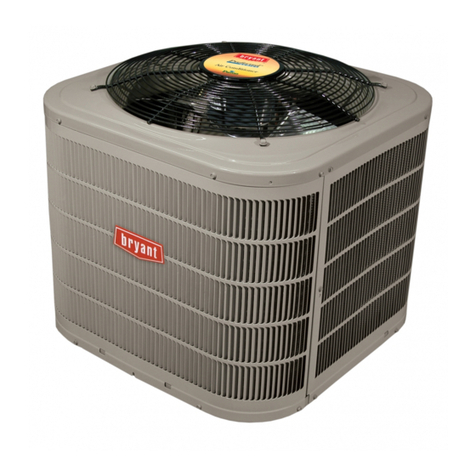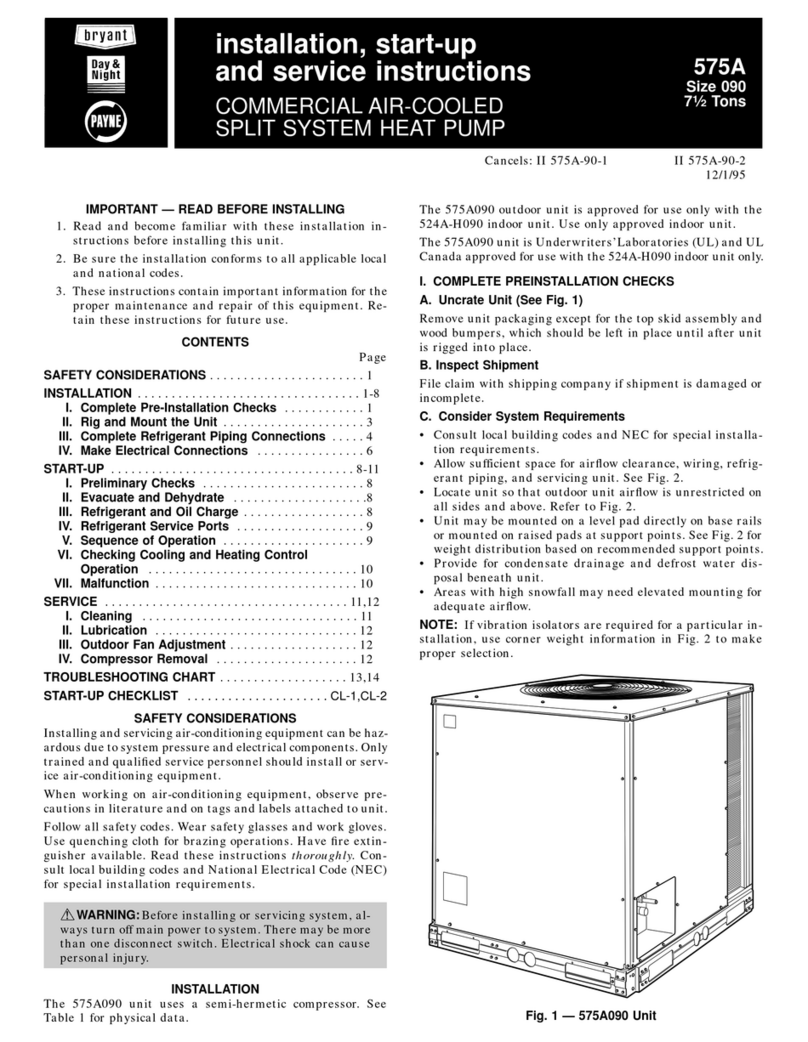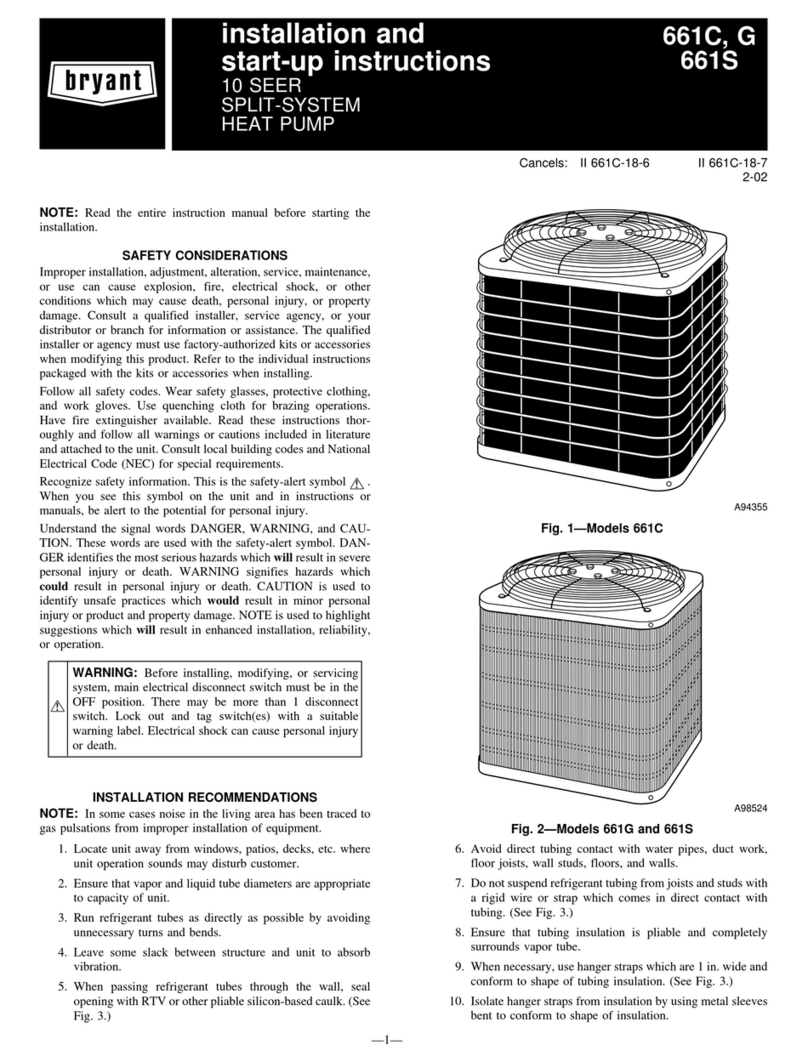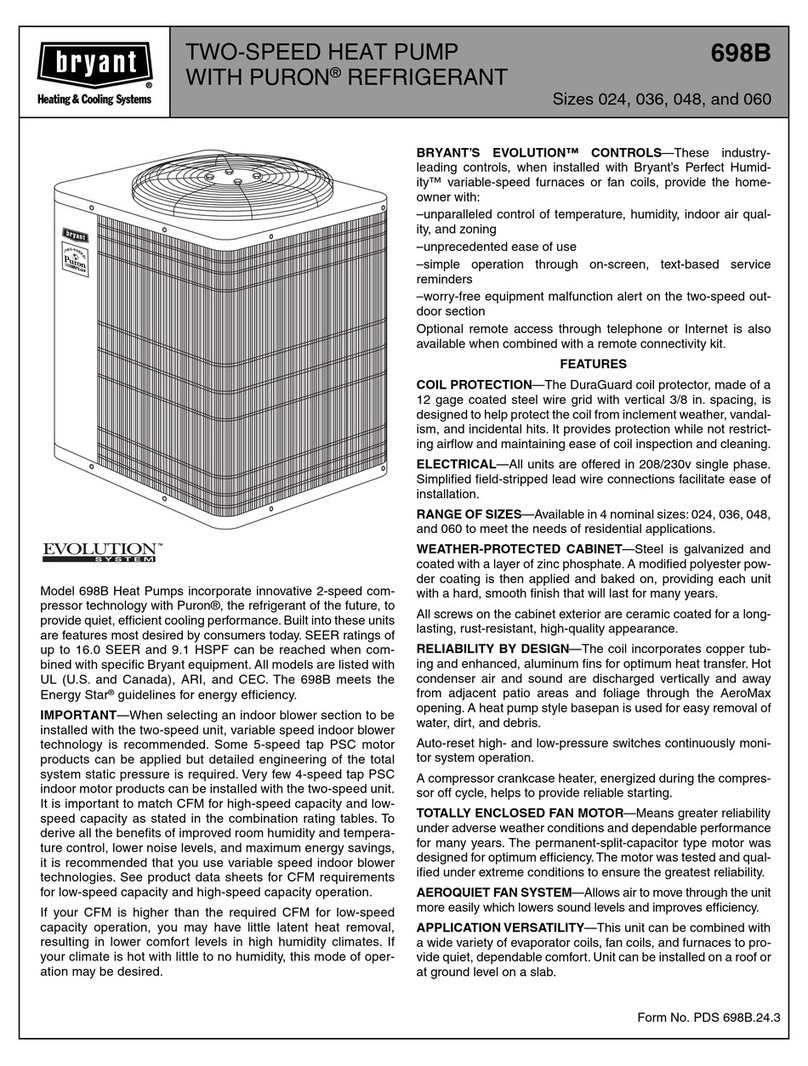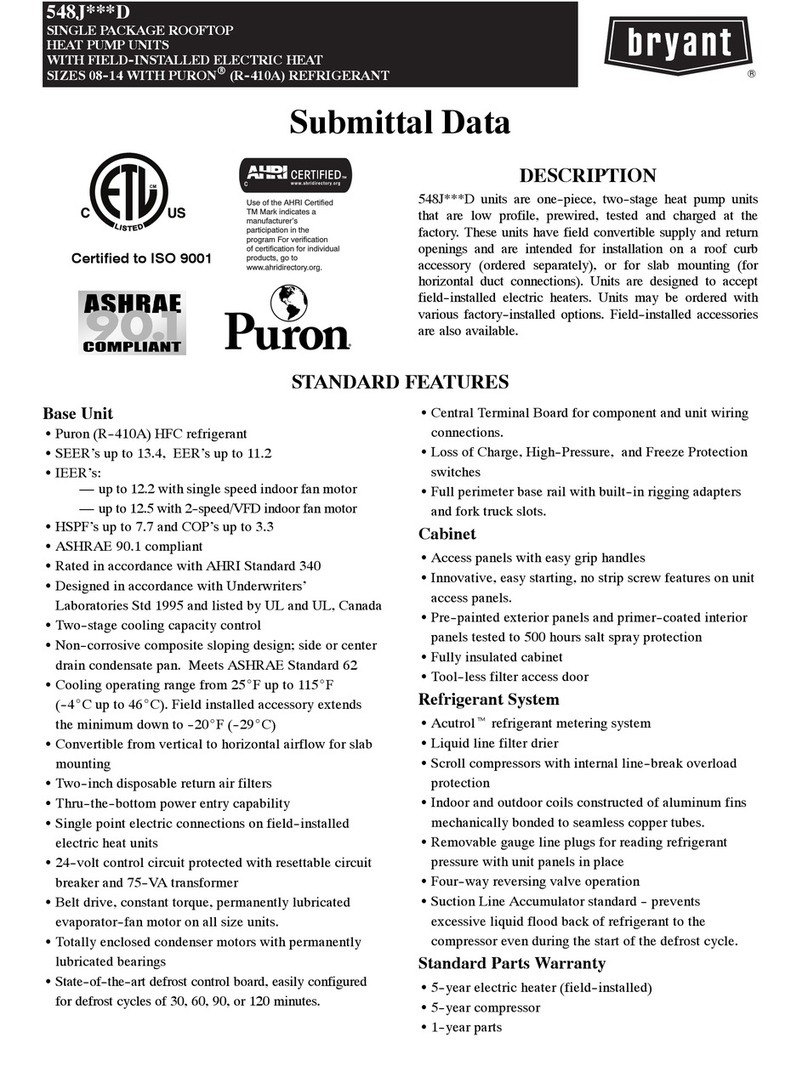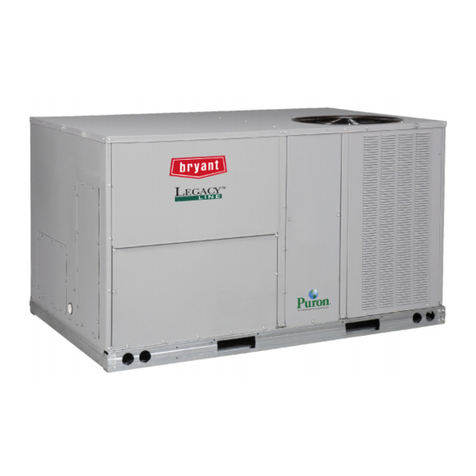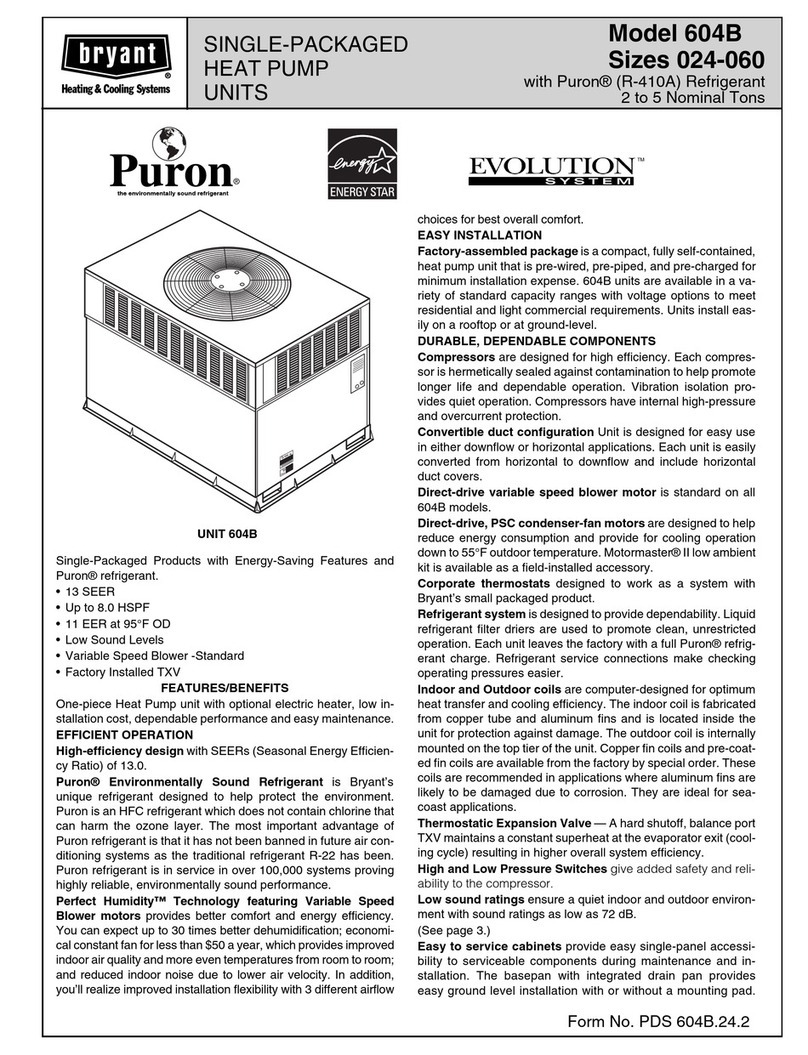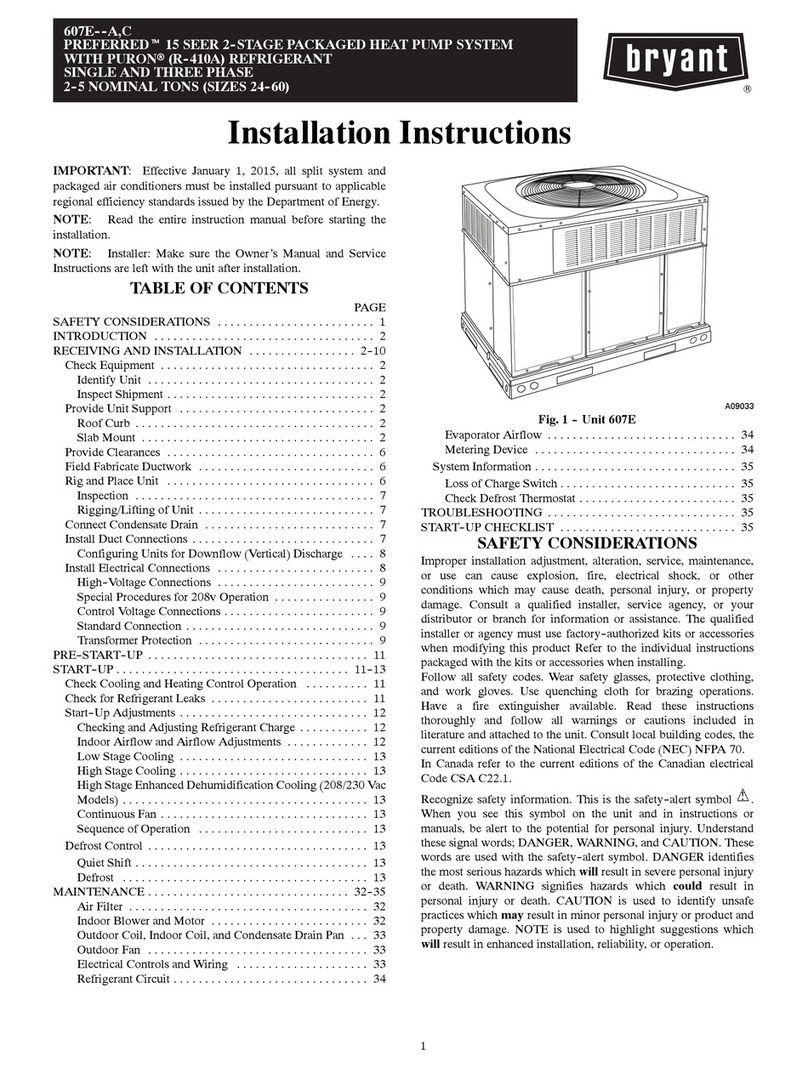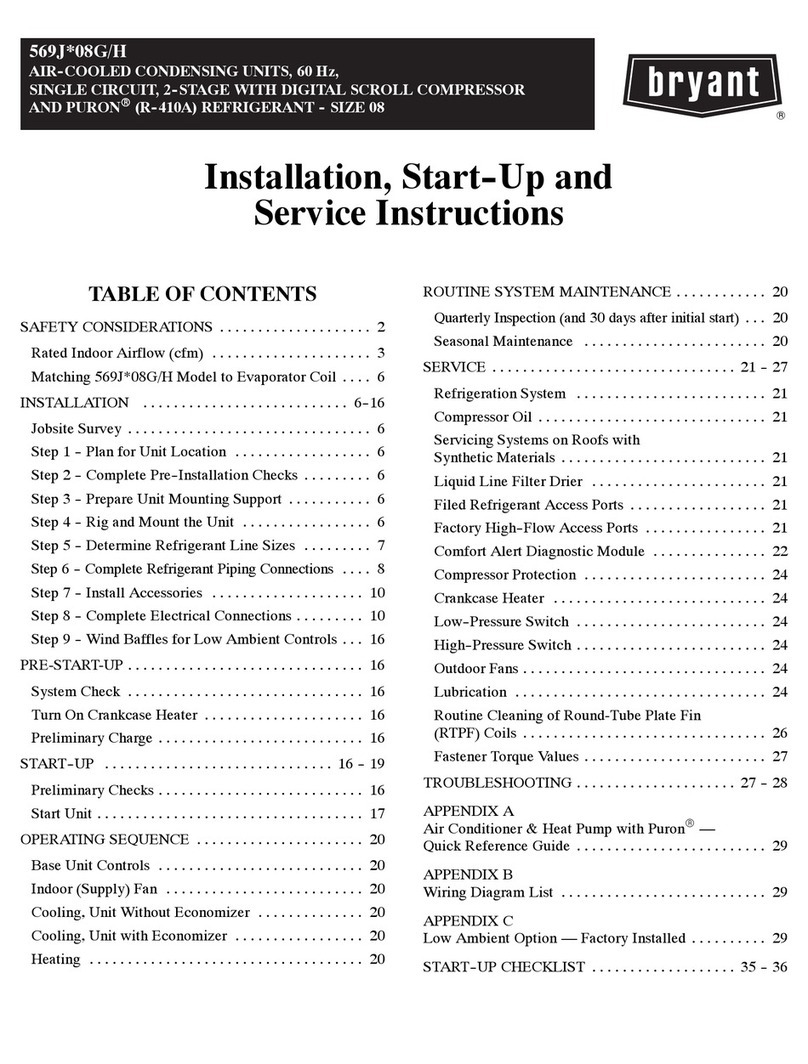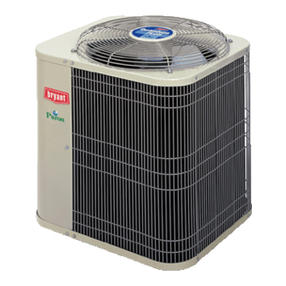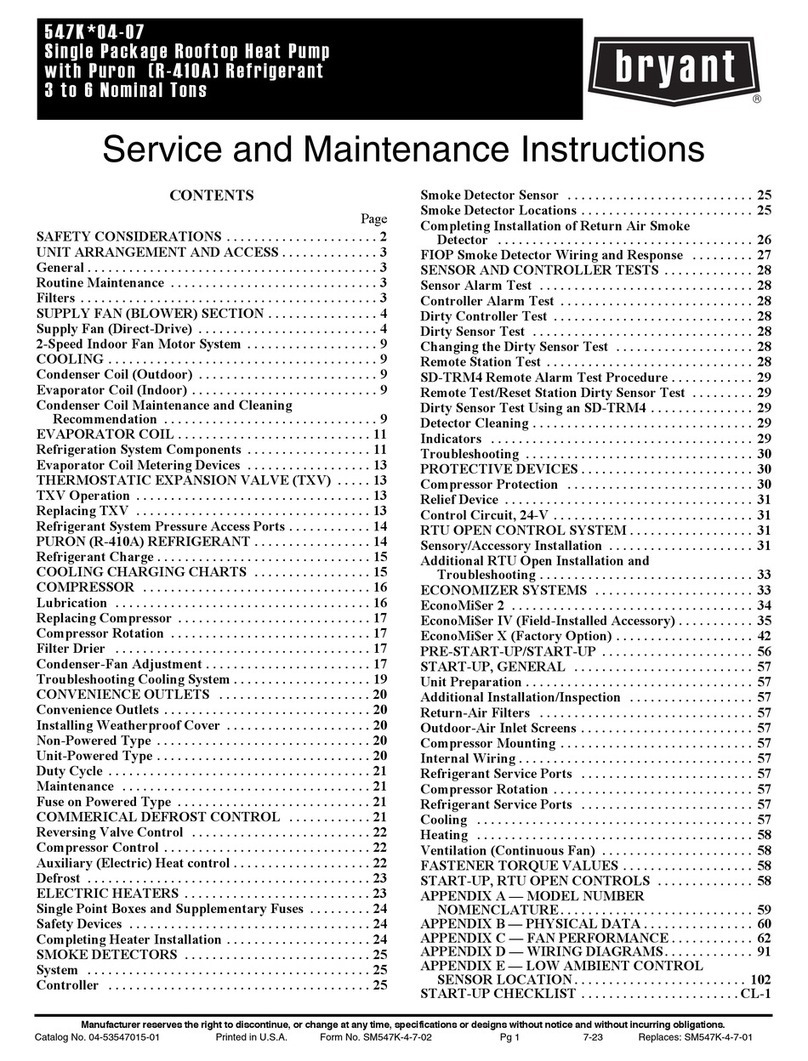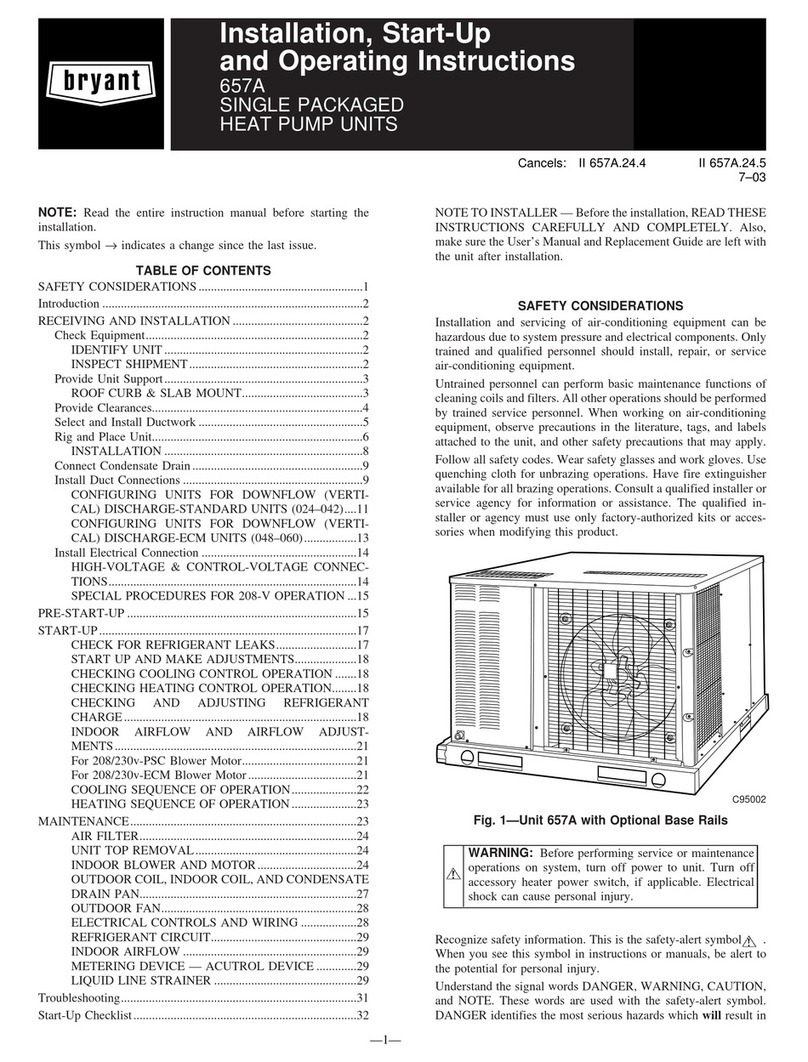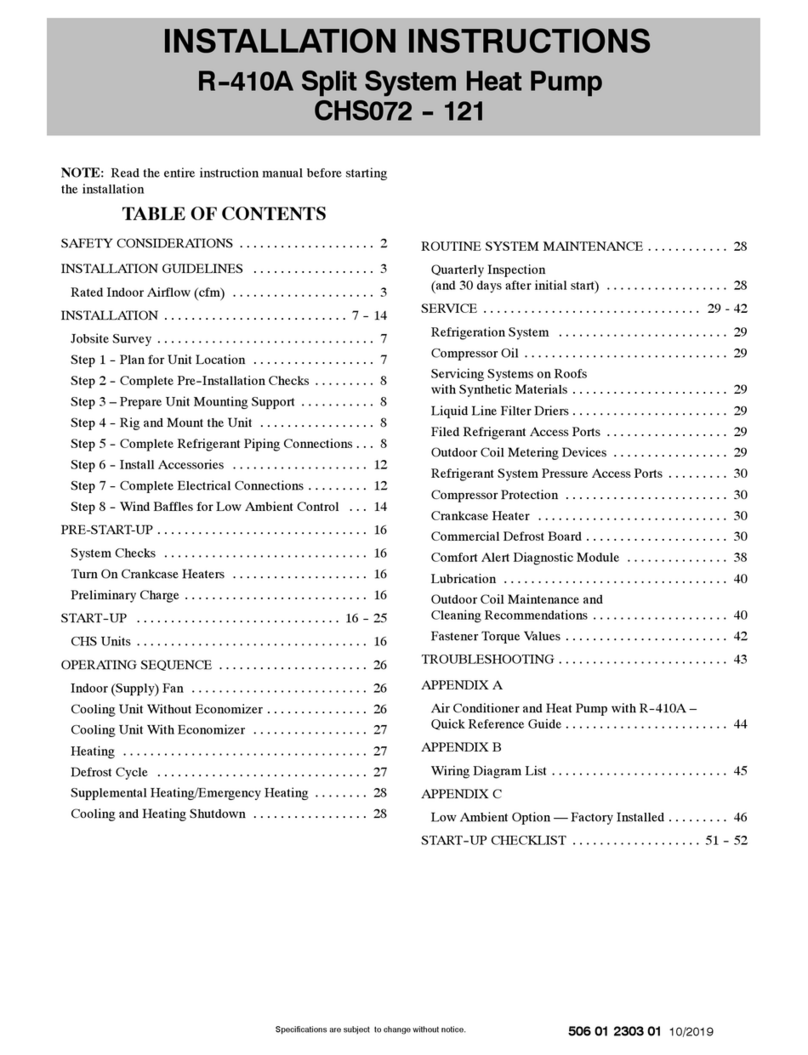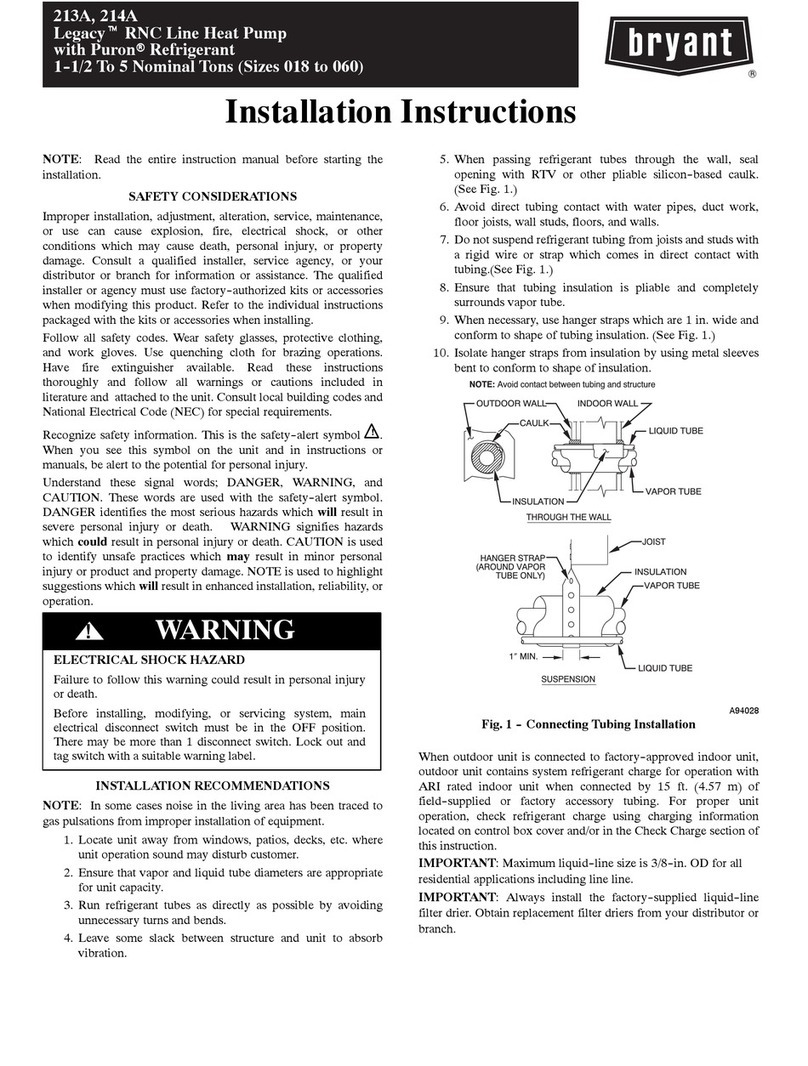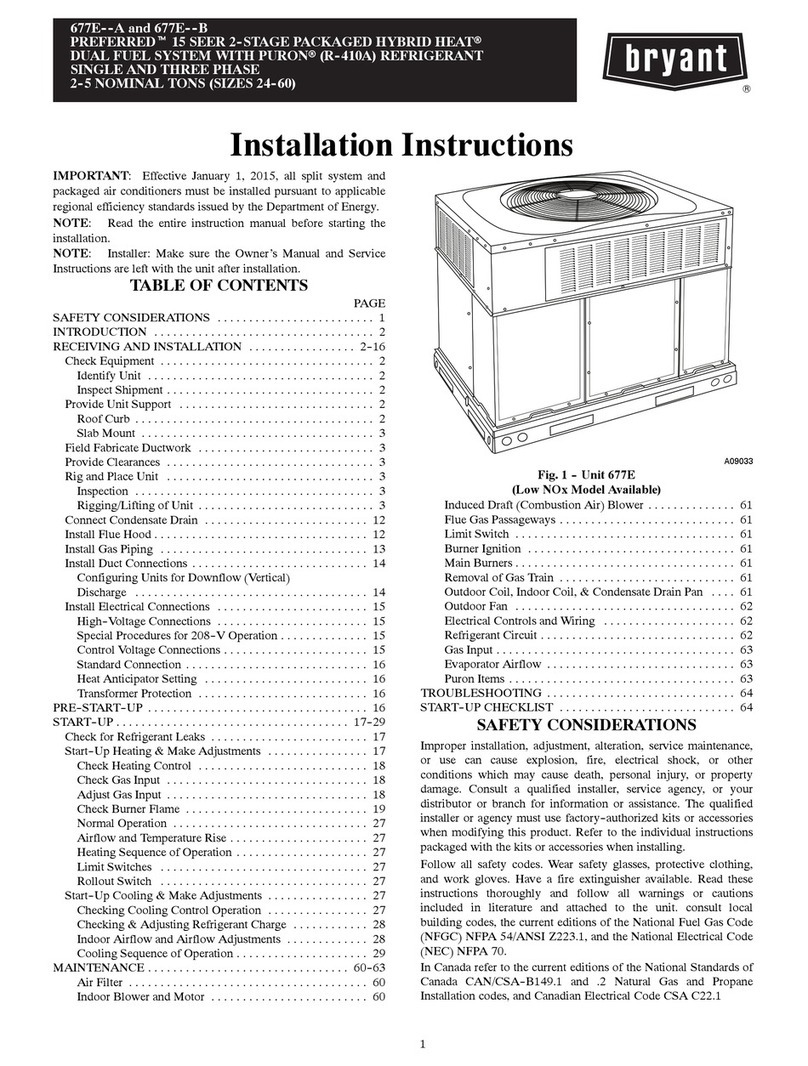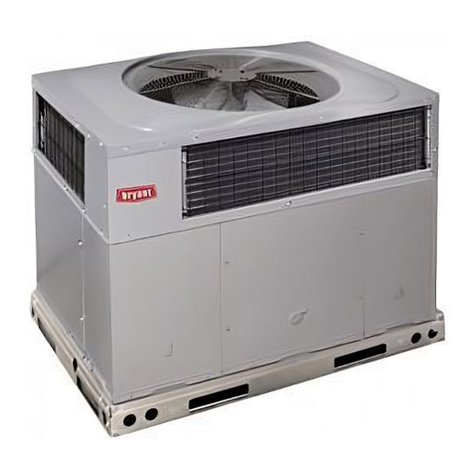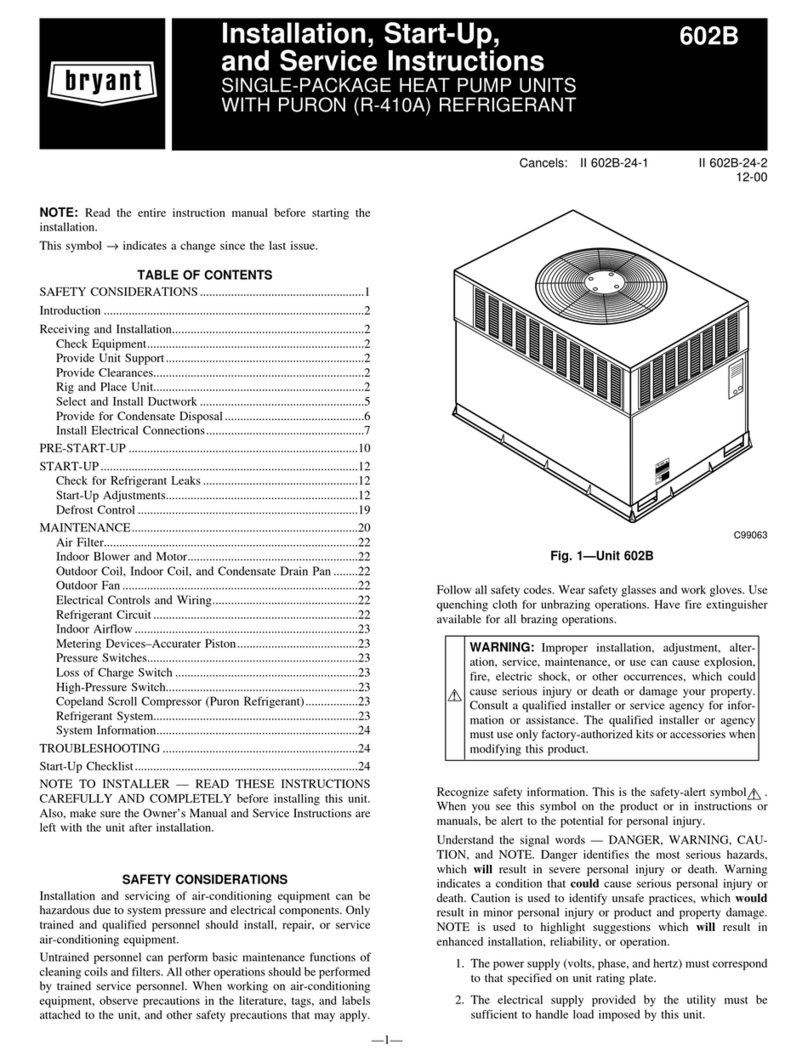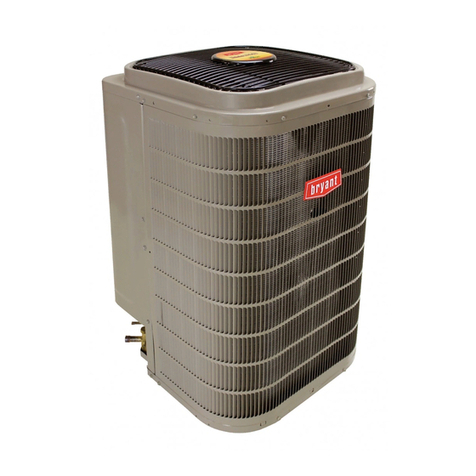
8
MOUNTING VERTICAL UNITS
Vertical units should be mounted level on a vibration absorbing
pad slightly larger than the base to minimize vibration transmission
to the building structure. It is not necessary to anchor the unit to the
floor. See Fig. 5.
NOTE: On VT and CF units, the condensate drain pan is
internally sloped. There is no internal P--Trap.
VIBRATION PAD
FULL SIZE
A14117
Fig. 5 -- Vibration Absorbing Pad
MOUNTING HORIZONTAL UNITS
While horizontal units may be installed on any level surface strong
enough to hold their weight, they are typically suspended above a
ceiling by threaded rods. The manufacturer recommends these be
attached to the unit corners by hanger bracket kits. The rods must
be securely anchored to the ceiling. Refer to the hanging bracket
assembly and installation instructions for details.
IMPORTANT: Horizontal units installed above the ceiling
must conform to all local codes. An auxiliary drain pan, if
required by code, should be at least four inches larger than the
bottom of the heat pump.
Plumbing connected to the heat pump must not come in direct
contact with joists, trusses, walls, etc. Some applications require an
attic floor installation of the horizontal unit. In this case, the unit
should be set in a full size secondary drain pan on top of a
vibration absorbing mesh.
The Secondary drain pan prevents possible condensate overflow or
water leakage damage to the ceiling.
The secondary drain pan is usually placed on a plywood base
isolated from the ceiling joists by additional layers of vibration
absorbing mesh.
In both cases, a 3/4”drain connected to this secondary pan should
be run to an eave at a location that will be noticeable. If the unit is
located in a crawl space, the bottom of the unit must be at least 4”
above grade to prevent flooding of the electrical parts due to heavy
rains.
NOTE: HZ unit condensate drain pan is NOT internally sloped.
IMPORTANT: Horizontal (HZ) units must be installed pitched
toward the Condensate Drain Connection 1/8” per foot.
CONDENSATE DRAIN
A14118
Fig. 6 -- Condensate Drain
A drain line must be connected to the heat pump and pitched away
from the unit a minimum of 1/8” per foot to allow the condensate
to flow away from the unit.
IMPORTANT: This connection must be in conformance with
local plumbing codes. A trap must be installed in the
condensate line to insure free condensate flow.
NOTE: HZ heat pump drain pan is not internally sloped.
A vertical air vent is sometimes required to avoid air pockets. The
length of the trap depends on the amount of positive or negative
pressure on the drain pan. A second trap must not be included.
DUCT SYSTEM
A supply air outlet collar and return air duct flange are provided on
all units to facilitate duct connections.
NOTE: Supply air duct and return air duct flanges are shipped
unfolded with unit.
Fold the duct flange outwards along the perforated line. Refer to
unit Dimensional Drawings for physical dimensions of the collar
and flange.
A flexible connector is recommended for supply and return air duct
connections on metal duct systems. All metal ducting should be
insulated with a minimum of one inch duct insulation to avoid heat
loss or gain and prevent condensate from forming during the
cooling operation.
Application of the unit to uninsulated duct work is not
recommended as the unit’s performance will be adversely affected.
CAUTION
!
UNIT OPERATION HAZARD
Failure to follow this caution may result in improper
equipment operation.
Do not connect discharge ducts directly to the blower
outlet.
The factory provided air filter must be removed when using a filter
back return air grill. The factory filter should be left in place on a
free return system.
If the unit will be installed in a new installation which includes new
duct work, the installation should be designed using current
ASHRAE procedures for duct sizing.
If the unit is to be connected to existing duct work, a check should
be made to assure that the duct system has the capacity to handle
the air required for the unit application.
If the duct system is too small, larger duct work should be installed.
Check for existing leaks and repair.
The duct system and all diffusers should be sized to handle the
designed air flow quietly. To maximize sound attenuation of the
unit blower, the supply and return air plenums should be insulated.
